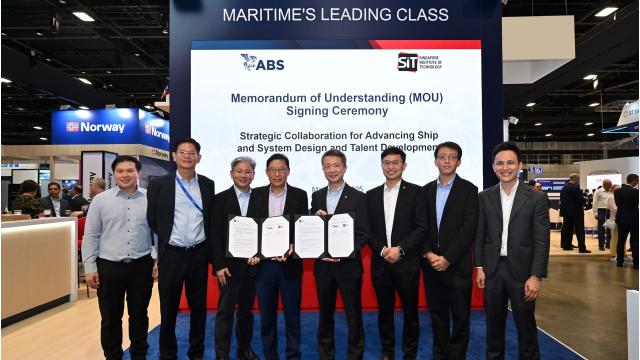SIT professors are using technology to improve working conditions for those who work under the sun.
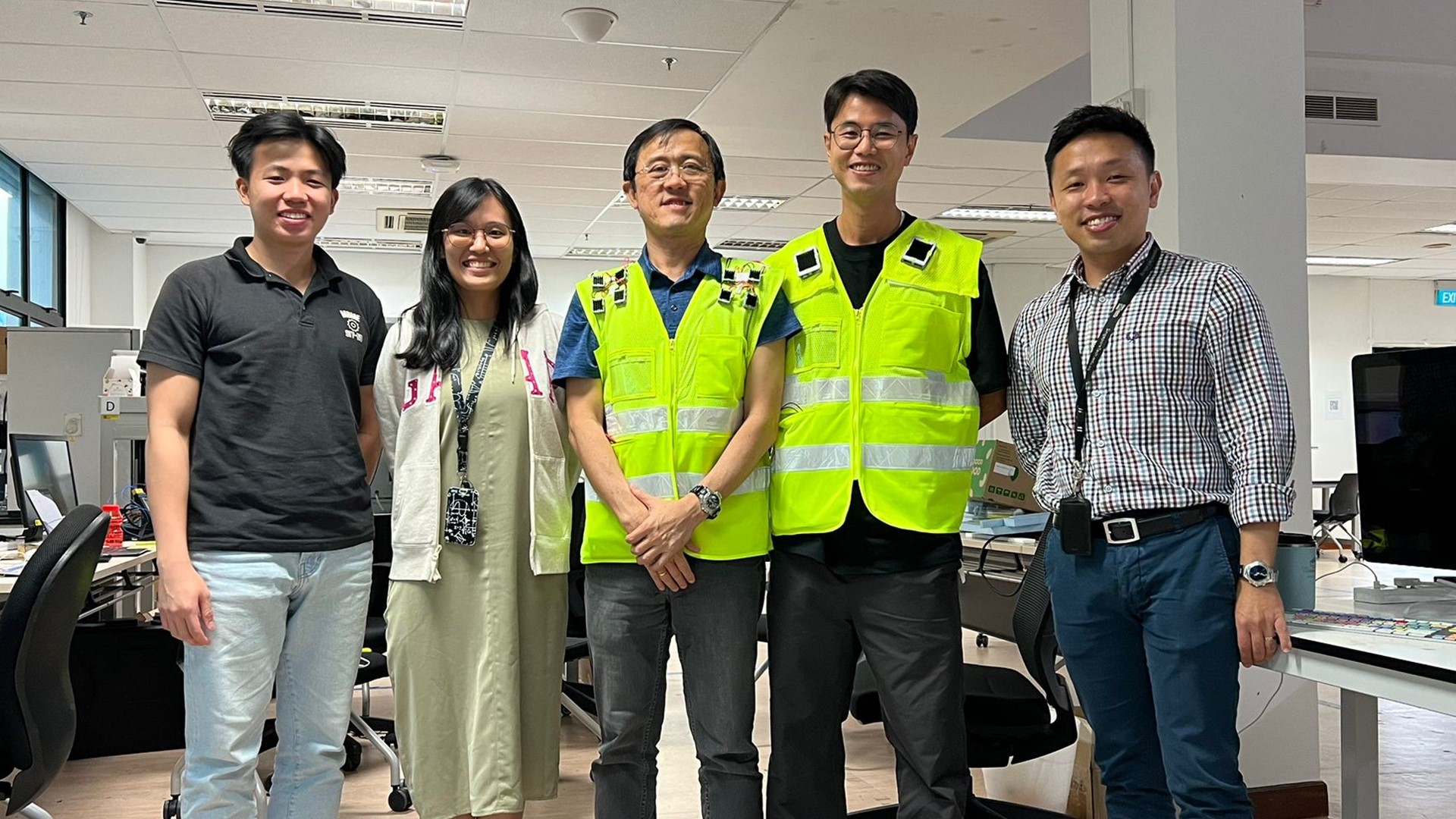
From left to right: Research Engineer Ng Peng Shu, Assistant Professor Elisa Ang (Co-PI), Mr Chan (LTA), Mr Branden Wong (SMRT) and Associate Professor Victor Wang (PI) (Photo: A/Prof Victor Wang)
Hands stained and backs aching, they worked quickly to assemble a custom thermoelectric cooler (TEC), a device that cools or heats objects across surfaces depending on the flow of electric current.
A TEC would be integral to designing and fabricating a cooler vest to reduce heat stress for workers and provide them with some thermal comfort in Singapore’s tropical climate. This is even more important in the face of climate change and increasingly hotter weather patterns.
“We had a production line,” laughed Assistant Professor Elisa Ang, who was part of the quartet including Associate Professor Victor Wang, Associate Professor Soh Chew Beng, and Research Engineer Ng Peng Shu, a Mechanical Design and Manufacturing Engineering graduate.
After some tries, they successfully created their first bright yellow cooler vest prototype. The project was initiated by the Land Transport Authority (LTA) and supported by public transport operator SMRT Corporation.
Identifying Gaps
At the start, the team tested commercially available products, including the fan vest, flowtherm vest, and ice pack vest.
While all three served their purposes, they had shortcomings. For example, the fan in the fan vest, or water from melted ice in the ice pack vest, added unnecessary weight.
The flowtherm vest – created with TEC technology – was heavy, cost US$280, had thick material and could only provide cooling for three hours before a recharge was required.
“The challenge then was to provide cooling for a good number of hours while not being too costly,” explained the team.
Survey results conducted on the ground with 20 SMRT construction workers found that the flowtherm vest provided the best thermal comfort. These preliminary findings gave the team the confidence to adopt TEC technology.
Trial and Error
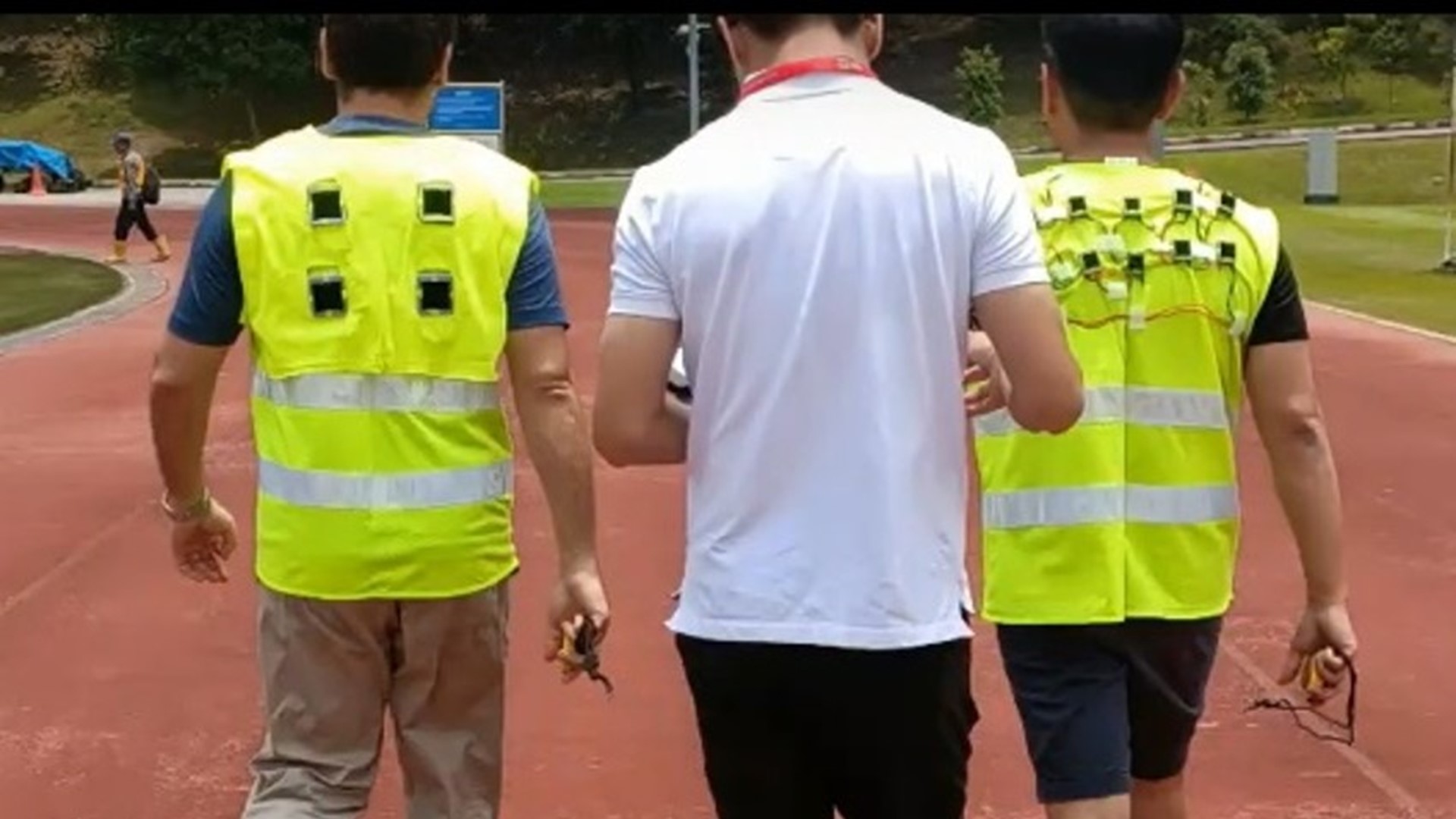
Multiple trials were conducted to find the optimal configuration of the TECs on the vest. (Photo: A/Prof Victor Wang)
Even with the technology decided, there were still a few things to sort out. The key was the configuration of the TECs on the vest. For this, the credit goes to then-capstone student Zubair Bin Abdul Rahim – one of 23 students involved in the project. After a few trials, Zubair discovered the optimal configuration – two on the chest and four on the back.
“We needed to know where to place the TECs on the body to maximise the cooling effect,” said Asst Prof Ang, and not affecting their motion and causing any discomfort, added A/Prof Wang.
While design feasibility was important, ensuring an optimal cooling effect was more critical.
The team soon realised that commercial TECs were unsuitable for cooling wearables or used against human skin. Commercial TECs are more optimal for electronic devices such as computer chips, beverage coolers and refrigerators, prioritising low thermal resistance heat transfer.
They needed a TEC that could quickly transfer heat away from the human body to provide a cooling sensation on bare skin. There was more work to do.
Design Optimisation
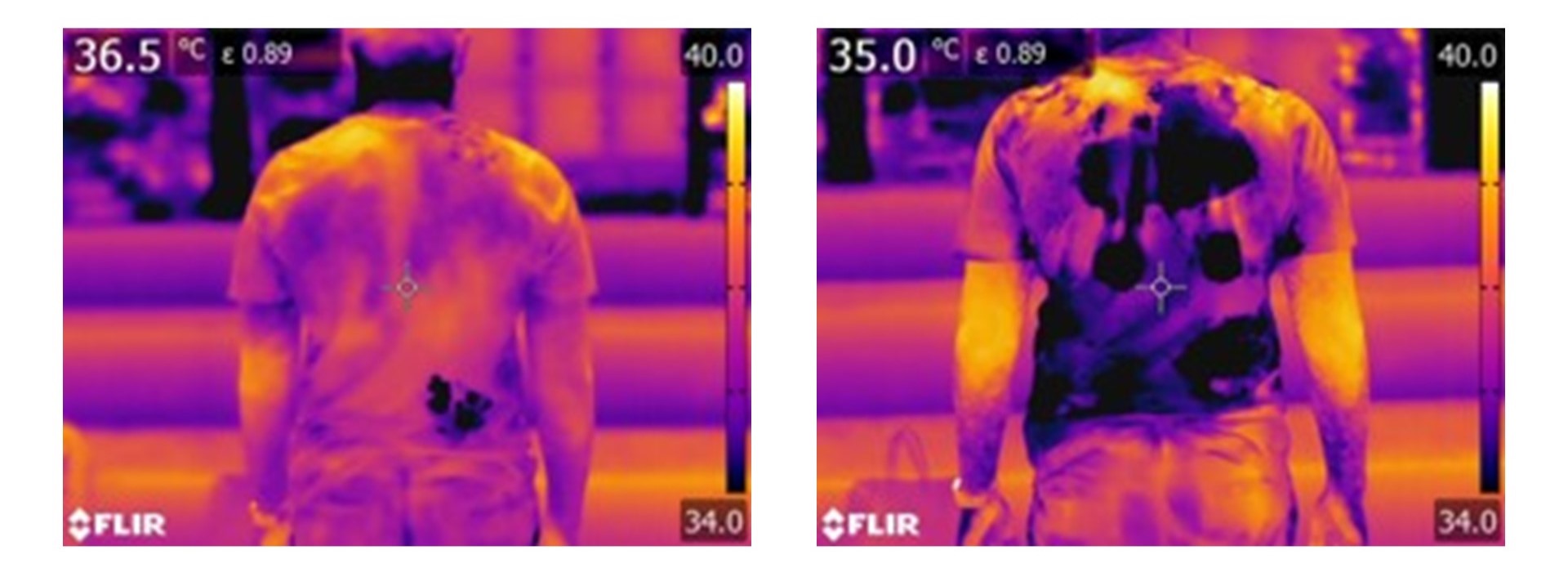
Visible temperature changes can be observed around the areas of the TECs. (Photo: A/Prof Victor Wang)
The quartet used numerical modelling – an engineering approach which utilises mathematical modelling and computational techniques – to optimise and build a design.
After many trials and tests, they determined that the TEC’s legs, also known as thermoelectric modules, had to be less densely packed and increased in height.
“The more legs you have, the more heat is generated,” explained Asst Prof Ang. The height of the legs mattered as well. “Longer legs put a distance between the hot and cold plate, creating a bigger thermal gradient,” she added.
An additional plate was also needed between the hot and cold plates. This would make for a double-layered TEC that would put further distance between both plates to drive greater temperature difference. This allowed the team to eliminate bulky fan heat sinks from the TEC, reducing unnecessary weight.
But the team faced another hurdle. They found that the TEC’s high resistance made it difficult for their power unit to pass 0.6 and 0.3 amperes through its cold and hot plates respectively.
“We needed to pass a very high voltage through it,” explained Asst Prof Ang. “But to do that, we need a huge battery,” she added, noting that the battery also added significantly to the vest’s weight.
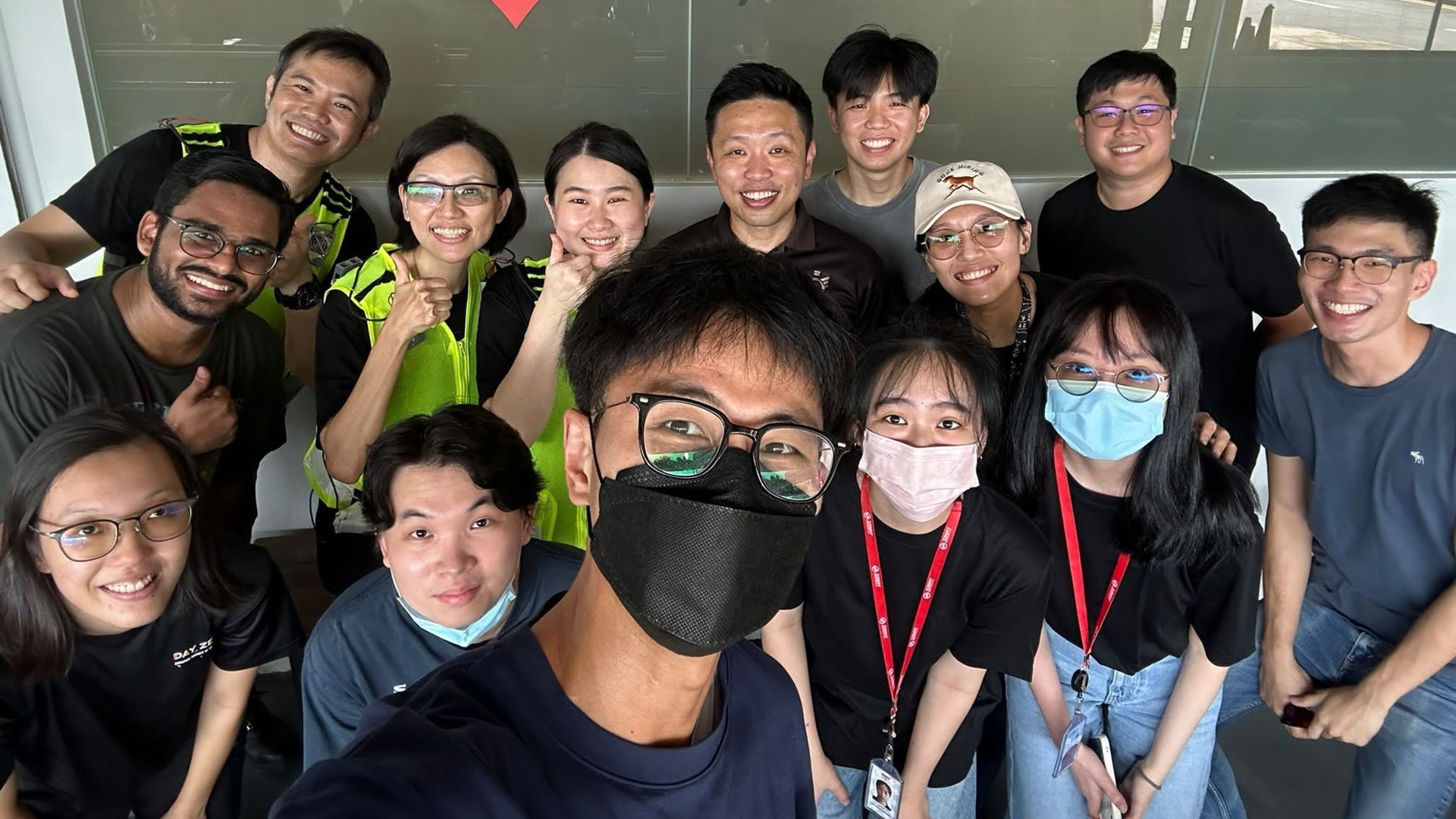
All smiles during a trial conducted at SMRT’s Bishan Depot with SITizens from the Aircraft Systems Engineering programme and SMRT personnel. (Photo: A/Prof Victor Wang)
To solve this, the team reached out to Professional Officers – a group of academic staff at SIT who are also industry professionals with many years of experience – including Ms Cherine Ng, for help.
The team succeeded in developing a power distribution unit that could be externally powered by a portable battery. Today, a 5V power bank can power the TECs for seven hours.
Looking ahead, the team is working to secure another round of funding to develop the prototype for commercialisation.
“Ideally, the vest can be worn by anyone,” said A/Prof Wang.
![[FA] SIT One SITizen Alumni Initiative_Web banner_1244px x 688px.jpg](/sites/default/files/2024-12/%5BFA%5D%20%20SIT%20One%20SITizen%20Alumni%20Initiative_Web%20banner_1244px%20x%20688px.jpg)
